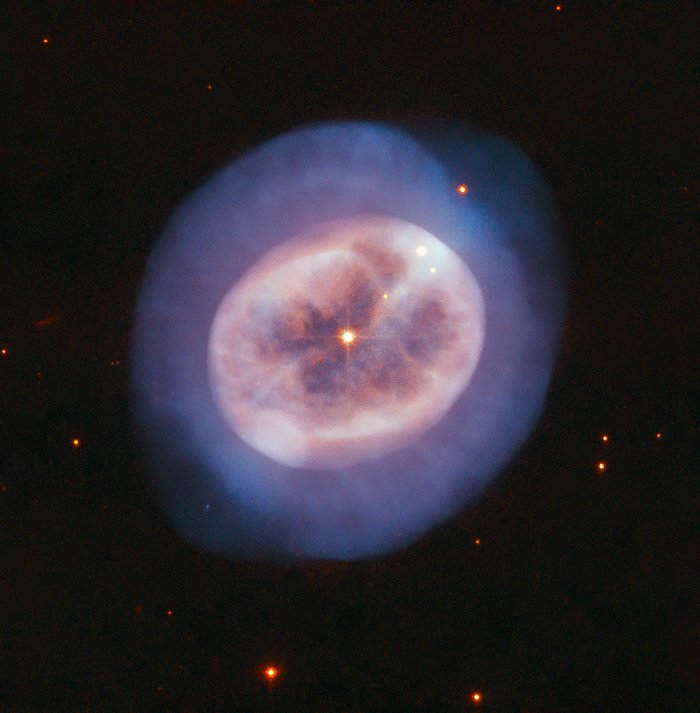
This image might look like a deep-space jellyfish, but it’s not a sign of extraterrestrial life — in fact, it’s a planetary nebula called NGC 2022, located in the constellation of Orion (The Hunter), which has been captured by the Hubble Space Telescope.
A planetary nebula is, rather confusingly, nothing to do with planets. It’s named that because when astronomers first observed these blobs in the sky with early telescopes, they thought that they were planets because of their round shapes. A planetary nebula is actually made of gas which has been ionized, making it glow and creating an expanding shell which pushes out into space. Such a phenomenon occurs when a red giant star reaches the end of its life and begins to eject gas, which forms the nebula.
Planetary nebulae are a subtype of emission nebulae, which are clouds of gas that are ionized by light emitted by a nearby star. In the case of NGC 2022, you can see the star shining brightly at the heart of the nebula. This star was once like our Sun, but as it aged it grew bigger and began to glow red, becoming a red giant.
When a star becomes a red giant, its outer layers of gas and other materials are gradually stripped away, being lost into space. This process can deplete a large part of the star’s material, with up to half a star’s mass being lost. This is what causes the outer shell of gas to form. While this is occurring, the dense core of the star is also shrinking and becoming hotter. The dense, hot core emits ultraviolet light which illuminates the gas shell, creating the beautiful nebula effect.
NGC 2022 is nearby and bright enough that it can be observed even with amateur telescopes. It appears as a small patch of grey light, with an apparent size of 0.65 arcminutes. It is located 1.8 degrees southeast of the luminous class O star Meissa (Lambda Orionis), in the northern part of the Orion constellation.



